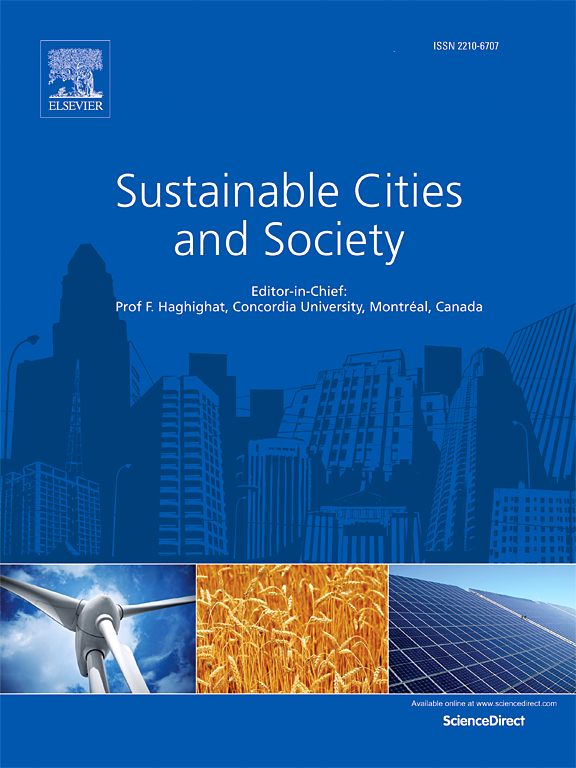Multi-perspective evaluation framework of three-dimensional cooling and energy saving potential of urban parks based on numerical simulation
IF 10.5
1区 工程技术
Q1 CONSTRUCTION & BUILDING TECHNOLOGY
引用次数: 0
Abstract
Urban parks can moderate local microclimates and mitigate the urban heat island effect prevalent in cities. Previous research has studied the cooling benefits of parks as well as their potential for energy conservation benefits for local buildings. However, there remains a poor understanding of the nuanced and three-dimensional mechanisms underlying the cooling benefits of urban parks. This study introduces a novel framework of indicators to comprehensively evaluate the three-dimensional cooling properties of parks, encompassing factors such as intensity, volume, and energy saving potential efficiency. The dynamic three-dimensional changes in the cooling effect and energy saving potential of two representative urban parks selected by multisource remote sensing data were simulated during spring, summer and winter days using the ENVI-met microclimate model. The results show that while seasonal variations impact park cooling and energy saving potential, the differences between individual parks outweigh these variations. Factors such as internal vegetation layout, surrounding building morphology, and prevailing wind direction emerge as pivotal factors on the cooling effects, particularly the cooling volume. Notably, the evaluation indicators exhibit distinct patterns of variation between intraday and seasonal analyses, with energy saving efficiency per unit volume demonstrating greatest stability. Furthermore, the exponential growth in the cumulative energy saving potential observed in the larger parks, despite diminishing returns in energy saving efficiency per unit volume. By highlighting the practical importance of evaluating park cooling and energy saving potential from multi-perspective, this study provides new insights into urban park design and management to mitigate urban heat.
求助全文
约1分钟内获得全文
求助全文
来源期刊

Sustainable Cities and Society
Social Sciences-Geography, Planning and Development
CiteScore
22.00
自引率
13.70%
发文量
810
审稿时长
27 days
期刊介绍:
Sustainable Cities and Society (SCS) is an international journal that focuses on fundamental and applied research to promote environmentally sustainable and socially resilient cities. The journal welcomes cross-cutting, multi-disciplinary research in various areas, including:
1. Smart cities and resilient environments;
2. Alternative/clean energy sources, energy distribution, distributed energy generation, and energy demand reduction/management;
3. Monitoring and improving air quality in built environment and cities (e.g., healthy built environment and air quality management);
4. Energy efficient, low/zero carbon, and green buildings/communities;
5. Climate change mitigation and adaptation in urban environments;
6. Green infrastructure and BMPs;
7. Environmental Footprint accounting and management;
8. Urban agriculture and forestry;
9. ICT, smart grid and intelligent infrastructure;
10. Urban design/planning, regulations, legislation, certification, economics, and policy;
11. Social aspects, impacts and resiliency of cities;
12. Behavior monitoring, analysis and change within urban communities;
13. Health monitoring and improvement;
14. Nexus issues related to sustainable cities and societies;
15. Smart city governance;
16. Decision Support Systems for trade-off and uncertainty analysis for improved management of cities and society;
17. Big data, machine learning, and artificial intelligence applications and case studies;
18. Critical infrastructure protection, including security, privacy, forensics, and reliability issues of cyber-physical systems.
19. Water footprint reduction and urban water distribution, harvesting, treatment, reuse and management;
20. Waste reduction and recycling;
21. Wastewater collection, treatment and recycling;
22. Smart, clean and healthy transportation systems and infrastructure;
 求助内容:
求助内容: 应助结果提醒方式:
应助结果提醒方式:


